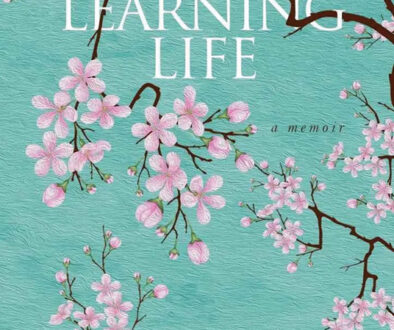Marbled, Speckled, and Splashed

Because it was originally known as a painted leaf flower, you might think the word poinsettia is the botanical name of this impressive species. However, its scientific name is Euphorbia pulcherrima- and you thought poinsettia was hard to say! Its common name comes from the man who is credited with introducing the plant to the United States, Joel Roberts Poinsett, who was the first U.S. Minister to Mexico.
Poinsettias are subtropical shrubs or small trees that grow from two to 13 feet tall and were once considered weeds. The colorful leaves are called bracts and are the reason why the color lasts so long. It’s because they are not flowers. The flowers are the inconsequential yellow berry-like structures in the center of those bracts.
Poinsettias have been used as Christmas decorations as far back as the 1600s. The shape of the leaves is said to symbolize the Star of Bethlehem, and the red color represents the blood of Christ. But it was the marketing genius of Paul Ecke, Jr. that forever cemented the relationship between poinsettias and Christmas in the U.S.
Paul’s grandfather, Albert, emigrated to the United States from Germany in 1900 and soon became fascinated by poinsettias; so much so that he began selling them from street stands. His son, Paul, Sr. inherited his father’s passion and by the early 1920s had successfully developed a method of grafting two varieties of poinsettias together resulting in a fuller, bushier plant.
But it was Paul, Jr. who changed everything by not only figuring out how to ship cuttings by air (rather than mature plants) but in 1963, decided to send plants to women’s magazines and television stations for them to display on air. He also made personal appearances on Bob Hope’s Christmas specials and The Tonight Show to promote them. All this eventually resulted in poinsettias becoming the world’s most economically important potted plant and the best-selling one in the United States.
The Eckes’ grafting technique was a closely guarded secret that ensured their monopoly until 1991 when John Dole, a graduate student at the University of Minnesota, rediscovered the method and published it, allowing competition to flourish. Seventeen years later, the Eckes still controlled 70% of the market here and 50% worldwide, but stopped growing plants in the U.S.
In 2012, the family finally sold out to Dutch conglomerate Dümmen Orange, one of the largest plant breeders in the world. Today, approximately 70 million plants are sold each year over a period of six weeks at a value of $250 million. It is interesting to note that poinsettias are sold mostly to women, who account for 80% of sales.
Tips for buying
Poinsettias are fragile, sub-tropical plants. They may bounce back a couple of times for you, but like many people at holiday time, they don’t perform well under stress. You don’t have to spend a lot but be careful in your selection. Don’t buy plants that:
- Are displayed near a door that automatically opens every few seconds.
- Are wilted, have yellow leaves or are missing the lower ones.
- Are totally dried out. The pot shouldn’t feel light.
- Have broken stems.
- Have signs of powdery mildew. Pull back the foil a little and peek inside.
Try to find plants with green or red-tipped center flowers. If they are already yellow, it means the flower has already “opened.” The plant is fine, but it may not last as long. Never take the plant out in the cold without a sleeve. Even the short trip from the store to the car can do them in. Be sure to carefully remove the sleeve by scrunching it down as soon as you get it home.
Keep them growing?
Poinsettias are finicky. I once heard someone liken them to Goldilocks and the three bears—they want everything just right! They like it warm during the day and cooler at night—but not too cold. Keep them away from drafts and the front door. Don’t place them too near a heat register or the fireplace, as they dry out quickly. They like water, but not too much. If you leave them in their foil wrappers make sure water doesn’t collect in the bottom. Water them, using room temperature water, only when the top of the soil is dry. If you have a forced-air heating system, they will also benefit from an occasional light misting.
It’s a good thing most of us don’t try to grow these plants year-round! But if you want to try, the conventional wisdom is to reduce watering after the holidays, but not to the point of letting the stems shrivel and die. Prune them back in April, repot them in May and grow them in a cool, dry place over the summer. As you may know, poinsettias require periods of darkness each day for the bracts to change from green to red (or pink or white, etc.). Poinsettias are “short day” plants that demand 12 to 15 hours of uninterrupted darkness each day beginning in mid to late October to change color by mid-December. Even just 10 to 15 minutes of light can confuse the plant and ruin the color change. What you may not know is, it is just as important that they receive nine to 12 hours of sunlight each day. So, you can put your plant in the closet overnight, but don’t forget to take it out each day.
Or you can simply prune them back after the leaves drop and continue growing them as you would any houseplant. By the way, don’t be alarmed when the leaves drop. Poinsettias are deciduous. New leaves will emerge soon.

Red is only the beginning
More than 150 new varieties have been created during the past few decades. Poinsettias now come in white, cream, yellow, gold, orange, apricot, salmon, pink, purple, burgundy, and even pale green—every color but blue. (The blue ones have been spray-painted.) The solids are nice, but the marbled, speckled, splashed, and variegated varieties will knock your socks off! There are even some doubles that have ruffled bracts and resemble roses. And plants are available for purchase much earlier. You may even be able to find some in time for Thanksgiving!
Did you know that poinsettias make good cut flowers? They can actually last one to two weeks. But there is a trick. You must seal the stem after you cut it to prevent the milky sap from leaking out. There are three ways to accomplish this, but I think the first one is by far the fastest: 1. Quickly burn the cut end with a long match or lighter; 2. Dip the cut end in hot water (140 degrees) for 20 seconds. Then dip it in cold water for 10 seconds; 3. Spray the cut end with denatured alcohol and place it in a vase filled with room temperature (plain) water for 24 hours. If it wilts, recut it and try again. If it doesn’t, it’s ready to use. Always cut the flower to the length you need because if you recut it, you will need to reseal the end.
To help keep your cut flowers fresh longer, fill your vase or vial with water that has been treated with a floral preservative. If you don’t have any on hand, make your own by adding ¼ teaspoon of bleach and a spoonful of sugar for every two cups of water. Also, lightly misting the bracts with hairspray will help to reduce aspiration.
Contrary to popular myth, poinsettias are not considered toxic or dangerous to pets and children. Even consumption usually has little effect although it can cause nausea, vomiting, or diarrhea in some people.
To see poinsettias displayed like you never dreamed of, visit Longwood Gardens or the U.S. Botanic Garden in Washington, D.C. during the month of December. The displays will blow your mind.
So, what is my favorite poinsettia? Cranberry juice and champagne with a splash of triple sec. Cheers and happy holidays! ■



